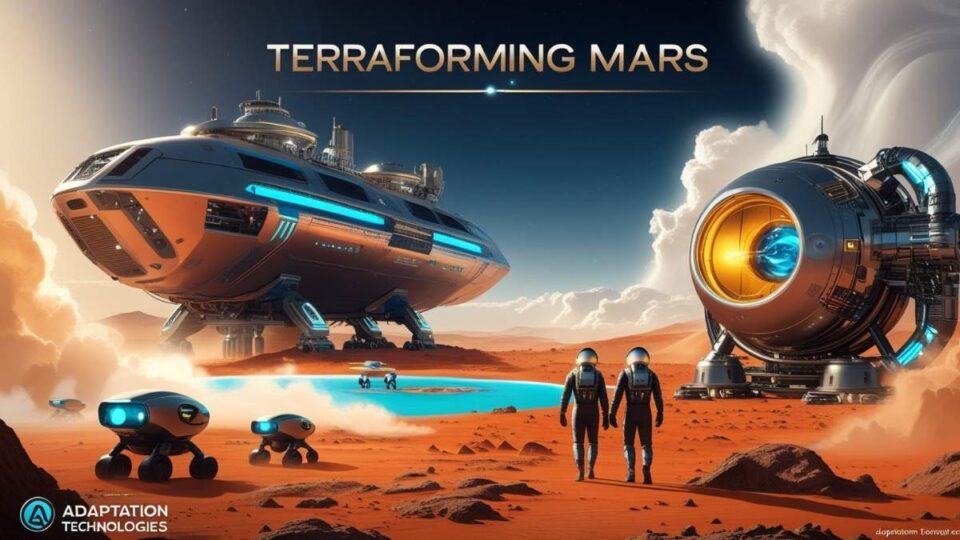Introduction
For centuries, humans have looked up at the red glow of Mars and wondered if one day we could live there. With growing interest from NASA, SpaceX, and other space agencies, the idea of making Mars habitable is no longer science fiction—it’s becoming a serious scientific goal. But transforming Mars into a world where humans can survive isn’t simple. That’s where adaptation technology in terraforming Mars comes in.
Adaptation technology refers to the tools, methods, and scientific innovations that would help humans not only survive but thrive in an alien environment. Instead of waiting thousands of years for Mars to naturally transform, adaptation technology focuses on making it livable for humans sooner. From creating breathable air to producing food and building sustainable habitats, these innovations could change the future of space exploration.
What is Terraforming Mars?
Terraforming Mars means altering its environment to make it more Earth-like. Currently, Mars has:
- A thin atmosphere (mostly carbon dioxide).
- Extremely cold temperatures (average: –63°C / –81°F).
- No liquid water on the surface.
For humans, this means Mars is uninhabitable without technology. Adaptation technology bridges this gap by providing artificial systems for air, heat, food, and water until (or if) Mars can be fully terraformed.
Adaptation Technology and Human Survival on Mars
Living on Mars isn’t just about finding a place to stay—it’s about adapting to an entirely new world. Key adaptation technologies that scientists are working on include:
- Closed-loop life support systems: Recycling air, water, and waste to ensure nothing goes to waste.
- Bio-domes and habitats: Structures that shield humans from radiation and extreme temperatures.
- 3D-printed shelters: Using Martian soil (regolith) to build strong habitats without shipping materials from Earth.
- Artificial magnetospheres: Concepts to shield Mars from solar radiation, making its surface safer.
These innovations allow humans to adapt quickly while long-term terraforming progresses in the background.
Table: Examples of Adaptation Technology for Terraforming Mars
| Adaptation Technology | Function on Mars | Benefit for Colonists |
| Bio-domes with controlled climates | Create Earth-like environments | Comfortable living & farming |
| CO₂ scrubbers and oxygen generators | Convert Martian air into breathable oxygen | Reduces need for constant supply from Earth |
| Hydroponic farming systems | Grow crops indoors with minimal water | Sustainable food supply |
| Radiation shielding habitats | Protect from cosmic rays and solar storms | Safe, long-term living |
| Nuclear/solar hybrid power | Provide reliable energy | Power for habitats & industries |
The Role of Adaptation Technology in Terraforming Mars
The phrase adaptation technology terraforming Mars describes a dual approach: humans adapting to Mars while also transforming Mars to suit humans. Instead of waiting for the planet to change on its own, adaptation technology speeds up the process by giving colonists immediate solutions.
For example:
- Oxygen generators could help terraform by slowly releasing oxygen into the atmosphere.
- Large mirrors in orbit might reflect sunlight onto Mars, warming its surface.
- Genetic engineering could adapt crops and even human biology to survive in Martian conditions.
These are not quick fixes, but stepping stones toward a habitable planet.
Challenges of Using Adaptation Technology
Even with all these innovations, Mars presents unique challenges:
- Radiation: Unlike Earth, Mars doesn’t have a strong magnetic field. Colonists will need protective habitats or underground living.
- Psychological health: Isolation and low gravity could affect mental and physical health.
- Resource limitations: Transporting supplies from Earth is expensive, so adaptation tech must focus on using Martian resources.

